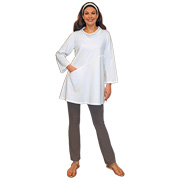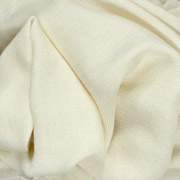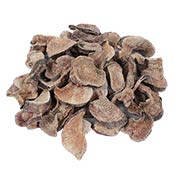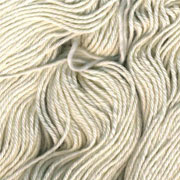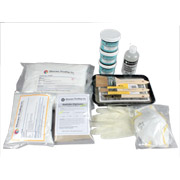- Acrylic Fiber
- Acrylic Tow Fiber
- Acrylic Staple Fiber
First U.S. Commercial Acrylic Fiber Production: 1950, DuPont Company
Current U.S. Acrylic Fiber Producers: Sterling Fibers
Federal Trade Commission Definition for Acrylic Fiber: A manufactured fiber in which the fiberforming substance is any long-chain synthetic polymer composed of at least 85% by weight of acrylonitrile units (-CH2-CH[CN]-)x. (Complete FTC Fiber Rules here)
Basic Principles of Acrylic Fiber Production— Acrylic fibers are produced from acrylonitrile, a petrochemical. The acrylonitrile is usually combined with small amounts of other chemicals to improve the ability of the resulting fiber to absorb dyes. Some acrylic fibers are dry spun and others are wet spun. Acrylic fibers are used in staple or tow form. For a detailed production flowchart (wet and dry spun), go here.
Acrylic fibers are modified to give special properties best suited for particular end-uses. They are unique among synthetic fibers because they have an uneven surface, even when extruded from a round-hole spinneret.
Acrylic Fiber Characteristics
- Outstanding wickability & quick drying to move moisture from body surface
- Flexible aesthetics for wool-like, cotton-like, or blended appearance
- Easily washed, retains shape
- Resistant to moths, oil, and chemicals
- Dyeable to bright shades with excellent fastness
- Superior resistance to sunlight degradation
Some Major Acrylic Fiber Uses
- Apparel:Sweaters, socks, fleece wear, circular knit apparel, sportswear and childrens wear
- Home Furnishings: Blankets, area rugs, upholstery, pile; luggage, awnings, outdoor furniture
- Other Uses: Craft yarns, sail cover cloth, wipe cloths
- Industrial Uses: Asbestos replacement; concrete and stucco reinforcement
General Acrylic Fiber Care Tips
- Wash delicate items by hand in warm water. Static electricity may be reduced by using a fabric softener in every third or fourth washing. Gently squeeze out water, smooth or shake out garment and let dry on a non-rust hanger. (Sweaters, however, should be dried flat.)
- When machine washing, use warm water and add a fabric softener during the final rinse cycle.
- Machine dry at a low temperature setting. Remove garments from dryer as soon as tumbling cycle is completed.
- If ironing is required, use a moderately warm iron. (For specific instructions, refer to garment's sewn-in care label.)




